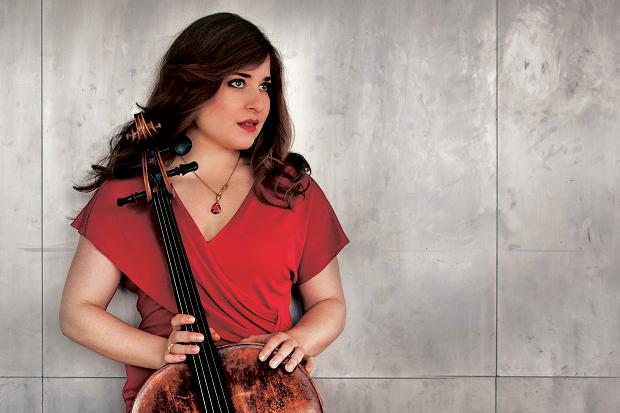Alisa Weilerstein brings a bounty of Bach

Alisa Weilerstein performed the complete Bach Cello Suites Sunday night at the University of DC Theater of the Arts.
When cellist Alisa Weilerstein comes to town, it is usually to play big concertos from the 19th and 20th centuries.
Her latest program, a complete performance of Bach’s six solo cello suites, seemed a stretch. Could Weilerstein sustain interest in this more austere music over the course of three hours?
Washington Performing Arts gave us the chance to find out on Sunday afternoon, in their new venue at the University of the District of Columbia’s Theater of the Arts.
Weilerstein sees this music through a Romantic lens, and that approach yielded some beautiful things. In the prelude movements that introduce the suites, performers can and should take greater rhythmic license. Weilerstein did so brilliantly in the Prelude of the Second Suite in D Minor, giving it an improvisatory character. Her intonation is generally excellent, and her high range on the A string was consistently pure and beautifully placed.
In the Sarabande of this suite, she chose a tempo that was flowing and not as sluggish as one often hears in this slow, graceful dance. The combination of rhythmic vigor and arching, Romantic melodic lines was particularly fine. Throughout the suite, she displayed a pleasing variety of tone color and articulation.
Similar qualities came across in her rendition of the Third Suite in C Major, especially in the freedom of the prelude, but too much rubato robbed this Sarabande of its grace. More regularity of meter tends to suit Bach dance movements, and Weilerstein had the best results when she brought out those rhythmic delights, as in the light, even detached gestures of the Allemande and the crunchy homeliness of the Bourrées. Baroque dance music should bend somewhat in tempo, without losing the sense of movement in expressive excess.
In the Allemande of the First Suite in G Major the sense of the meter was badly obscured, and matters were no better in the suite’s Sarabande as Weilerstein luxuriated in small details but lost the big picture. The Courantes and Gigues, as in the Third Suite in C Major, tended to be set at rapid tempos, but speed without pointed direction provided surface excitement but often seemed harried.
Weilerstein was wise to perform the suites in the numerical order. This keeps the pairing of optional dances clear: Menuets in the First and Second Suites, Bourrées in the Third and Fourth, and Gavottes in the Fifth and Sixth. She hit a high point in the Fourth Suite in E-Flat Major, with suave tone on the A string in the Sarabande. The double stops, which were not always clean elsewhere, were especially effective, gliding evenly into and out of the solo line.
Most young musicians coming through conservatories now are gaining at least some experience in historically informed performance. They learn about ornamentation and about styles of articulation and metrical weight, and they can switch comfortably between traditional and early music approaches. One wished for more of those qualities in Weilerstein’s performance as the program wore on. She played mostly without vibrato, and she tended to prefer brisk tempos in all movements but the Sarabandes. Still there was a lack of tension as the rhythm of many dance movements was obscured by generous slathering of rubato.
There is no reason one has to perform all six of the suites, and by the last two Weilerstein’s concentration seemed to waver as more details went missing. As a good portion of the audience also left after the second intermission, it might have been better to have made a selection of three or four of the best suites. Certainly in a complete performance, she could have omitted at least some of the repeats.
The optimal selection would have excluded the Sixth Suite in D major, which was the least pleasing of the night. The score requires awkward extensions because, as the main manuscript source indicates, it was intended for an instrument with five strings, including a high string not found on the cello. Weilerstein’s exemplary A string tone served her well in the Allemande especially, but the Prelude made clear the compromises that have to be made to adapt the piece to the cello.
The unsuitability of the venue to intimate chamber music only made Weilerstein’s task more arduous. A blower from the ventilation system made a racket through most of the first two suites, and beeping truck noises and an unexplained hissing noise bled through, tainting what is not a beautiful acoustic for soft sounds to begin with. Hopefully the Kennedy Center can complete the renovation of the Terrace Theater on schedule.
Washington Performing Arts presents violinist Hilary Hahn and pianist Robert Levin October 28 in the Kennedy Center Concert Hall. http://www.washingtonperformingarts.org/calendar/view.aspx?id=3158
